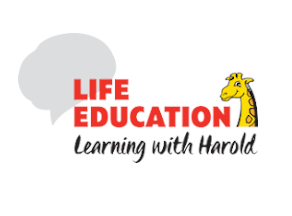What is a Balanced Diet?
We can get a balanced diet by eating some foods from each food group every day.
The food groups we need to eat from are:
- Fruit and Vegetables
- Breads and Cereals - includes rice and pasta
- Milk and Milk Products - includes yoghurt and cheese or dairy alternatives
- Lean Meat and Alternatives - includes nuts, seeds, eggs, and legumes such as beans
Why do we need a Balanced Diet?
Eating from a wide range of foods allows us to obtain all the nutrients and vitamins that we need every day to grow, learn, and play. Each food group provides different types of nutrients, so it is important that our diet includes them all.
How many servings should we eat?
The recommended number of servings we should eat from each food group are:
- Fruit and Vegetables: at least 5 servings per day. A serving is one medium sized vegetable (or piece of fruit), 2 small pieces or ½ cup mixed veggies (or fruit salad).
- Bread and cereals: 5 to 6 servings per day. A serving is one piece of bread, or one cup of rice, pasta, or cereal.
- Milk and Milk Products: 2 to 3 servings per day. A serving is one cup of milk, 2 slices of cheese, or 1 pottle of yoghurt.
- Meat and alternatives: at least 1 serving per day. A serving is one egg, 1 chicken drumstick, 2 slices of cooked meat, or ¾ cup of mince or beans.
What about Fluids?
We need plenty of fluid to keep our bodies and brains working well. Water and low-fat milk are the best drinks to have.
- Water is best to drink throughout the day. Milk is best drunk after, or between meals so that it does not replace food at mealtimes. Low fat milk is the best choice. Flavoured milk is high in sugar so should be drunk only occasionally and in small amounts.
- Sugary, fizzy drinks contribute to weight gain, and to tooth decay. It is not recommended to drink them often.
- Diet drinks do not contain sugar but, because they are acidic, they can still damage teeth.
- Fruit juice has high levels of sugar, but without the fibre of the fresh fruit.
- Eating fresh fruit is a better way to get the vitamins and minerals that fruit provides.
- Energy drinks contain very high levels of sugar, along with caffeine. They are too high in carbohydrate and caffeine to quench thirst effectively, and are not recommended.
- Sports drinks are not necessary. Plain water is the best liquid to drink.
- Coffee and tea are not good drinks for young people, as they contain caffeine.
Meal Patterns and Me
Eating a range of foods at regular times of the day will ensure that our bodies can perform at their best.
Three meals and two or three small snacks will keep us full of energy and ready to learn.
Breakfast:
Breakfast will help us arrive at school ready to concentrate and learn. If we don’t have time at home, we can eat some food on the way - for example, a banana, or a peanut butter sandwich.
Lunch:
Lunch will give us energy to keep going during a busy afternoon. If we don’t bring food from home, we can remember how to choose healthy and nutritious foods from the school canteen. The best options will include vegetables or salads, and not fried foods or sugary drinks.
Dinner:
Eating meals together with family/whanau is a great way for us to connect and find out how everyone is doing!
Snacks:
If having a snack between meals, we can try to eat healthy foods.
Great ideas are: fruit, yoghurt, vegetable sticks with hummus, mini homemade pizza, nuts, or milk.
Foods and drinks that are high in fat, salt, and sugar are best eaten only occasionally. These include chippies, corn chips, lollies, fizzy drinks, hot chips, chocolate, pies, and takeaways such as burgers. These foods are high in calories, but contain few nutrients or vitamins.
Healthier choices for takeaways are kebabs, wraps, pizza with more vegetables than cheese, sushi, non-fried rice or noodle dishes, or baked potatoes with meat, beans, or salad.
Now you have read through our Fact Sheet, have a go at Harold's quiz below:

